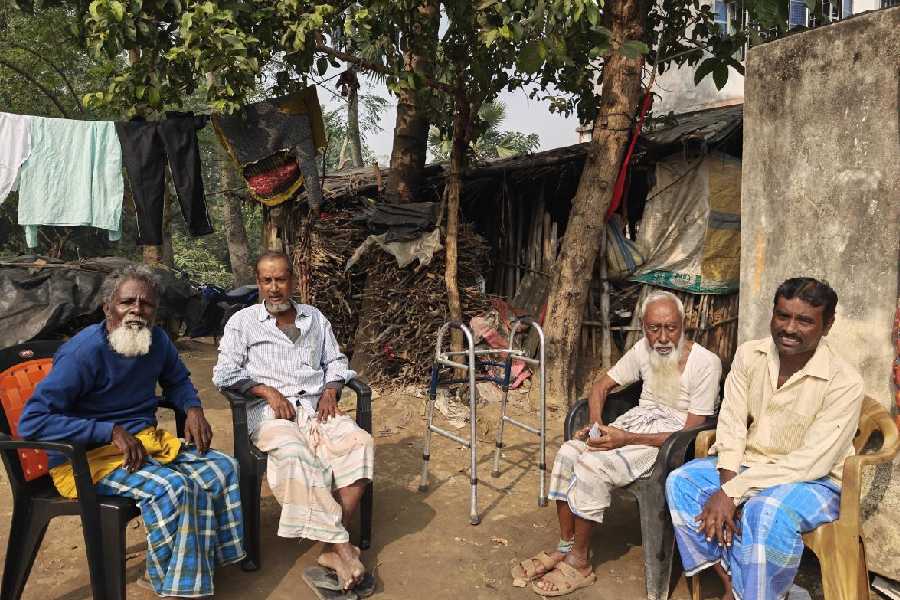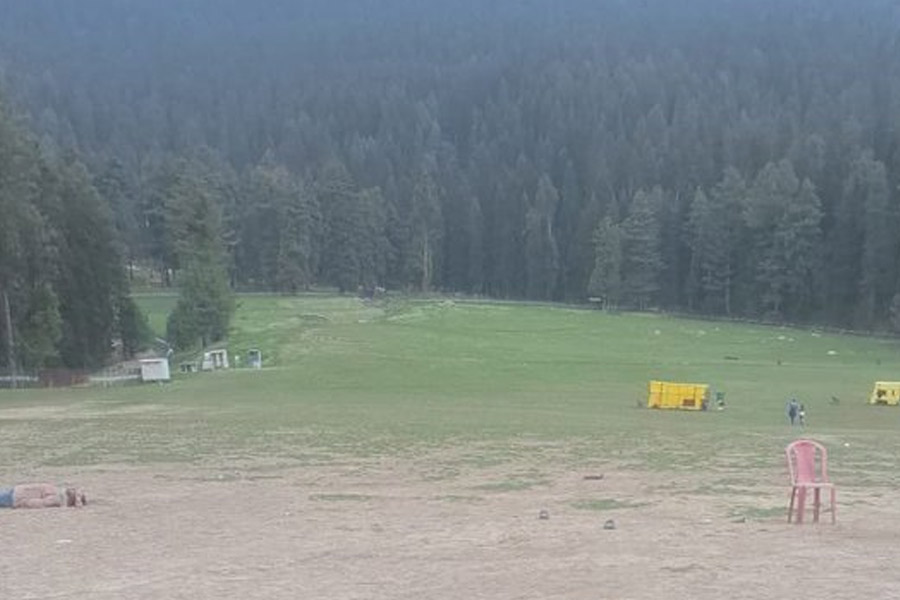 |
| Me in myself, Chandana Mukherjee |
An orange toothbrush is suspended from a wire like Trishanku between heaven and earth, with a profuse tangle of tentacle-like wires, instead of bristles, at one end. Somehow this sculpture from the show at Studio 21 (on till July 14) seems to me a comic but apt representation of the modern artistic dilemma. Curated by Manas Acharya, Confrontation: Conflict between ideas and images presents the attempts of eight artists to decode the myriad data and experiences that bombard their consciousness daily.
Young, vibrant and cheeky, these artists share the irreverent attitude of pop artists, though they don’t lack individuality.
Chandana Mukherjee used to do realistic paintings until she discovered the ability to create urban legends that were all her own. Born in 1981, Chandana has done her masters from the Government College of Art and Craft. In her legend she acquires the characteristics of a Chandana bird with elaborate green and red plumage. The human-headed parakeet flies high above the city, dipping down now and then to paint Ganesha motifs on a sleeping pavement urchin or regarding with dismay the wreckage of an accident.
The artist has an eye for detail and enjoys decorating her bird’s eye views of the city with recognizable images. One recurring motif is an empty stainless steel tiffin box that appears beside the street child and also beside the Ganesha with whom the Chandana bird celebrates Christmas in a café. On the table before this cheerful Ganesha — wearing a crucifix locket — are a fizzy drink, a tray of traditional laddoos and the empty tiffin box. Far below this café lies the city decorated with lights and a glimmering Christmas tree; even Ganesha’s mouse wears a red-and-white Santa cap. Chandana’s paintings are enjoyable with its gamut of images and narrative possibilities. Her skill in reproducing realistic details only enhances the impact of her surreal world.
Ankan Bandyopadhyay chooses a simpler and more direct style of communication. By playing colours against each other and turning forms into neat decorative compositions, he manages to both please the eye and inspire thought. Is 21st century love beautiful but dangerous? Does it pressurize people, turning them sooty black? The colourful patterns on the pressure cooker make it appealing, but then few things give away what they really are. When we smile is it really a cover for the tears we protect from the public eye, as in We have forgotten to cry? Even the suave corporate executive image turns out to be just a shell. Behind the expensive clothes is emptiness. The little red man who goes self searching with a torch behind the deep chocolate coat and matching trousers draws a blank.
Another one who uses his drawing and painting skills to his advantage is Timir Brahma. Recalling the stuff of advertisements and animations, his poster-finish acrylics promise superhuman love and enjoyment. The man who bares his chest and curls his lips has a target drawn on his heart ready for a cartoonish Cupid’s arrow. His Honey man is a modern-day Hanuman in striped and branded underwear and sunglasses. The sanjivani he offers is a package of commercially available commodities — a house and a woman in the shower.
With Bollywood in its centenary year, Debosmita Samanta creates the My Hero series where she uses images of evergreen film idols such as Madhubala, Meena Kumari and Sharmila Tagore. The collage of images cut and pasted or printed on textured paper are embellished with bits of foil, decorative beads, sequins and painted backgrounds and foregrounds. But try as they might, none of the ladies can break out of the stereotype. They may wear hats and flaunt guns but they all remain Bollywood heroines — Indian women with not just one but many centuries of hero worship.
In Sumantra Mukherjee’s large acrylic and oil canvases — which he calls the Kneel Down series — we are just as conscious of the action of kneeling down as we are of the forces that have induced the posture. What, for instance, one wonders, has forced the old ragged father to kneel holding his son’s birthday cake? Who has nailed his tongue to silence him? Why is the Kneel Down Girl bawling inconsolably when she has a blue sky, a green field and more toys than she can hold?
Debatosh Kar who created the toothbrush sculpture out of fibre and wires also had a sculpture of a burnt out cigarette. The ash tower may stand for the tragedy of all that was incinerated, or be a tribute to the time spent while the cigarette turned to ash.











